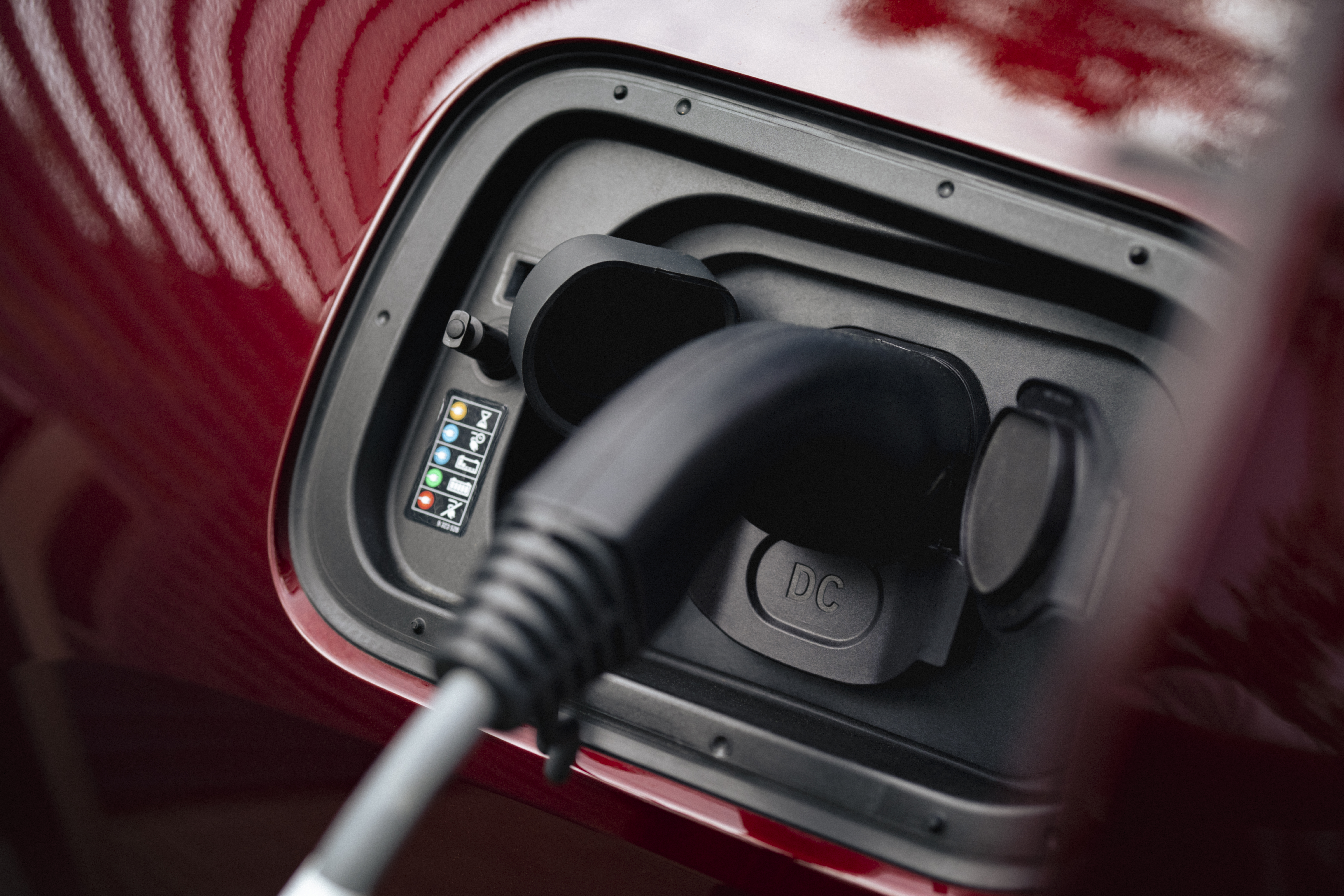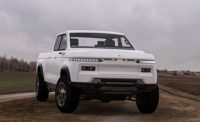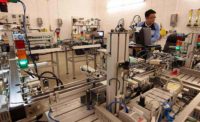The future of the automotive industry involves autonomous, connected, zero-emission vehicles. To address the numerous issues and challenges associated with those technologies today, the University of California, Irvine (UCI) recently opened the Horiba Institute for Mobility and Connectivity2 (HIMaC2).
The new organization is a part of the Advanced Power and Energy Program at UCI, which focuses on the future of mobility, and the integration of the energy and transportation sectors, including its impact on the electric grid.
Horiba Group, a leading supplier of analytical and measurement systems, donated $9 million to UCI in 2018 to establish HIMaC2.
The vehicle evolution lab studies the performance of zero-emission drivetrain components, such as batteries, electric motors and hydrogen fuel cell stacks. Photo courtesy University of California, Irvine
“[We are] convinced that HIMaC2 will contribute to realizing the new energy society and be an outstanding research institute to make our future society much more sustainable,” says Atsushi Horiba, chairman and CEO of Horiba Ltd. “As interest in electrification and hydrogen increases, the world is anxiously waiting for HIMaC2’s outcomes.”
“HIMaC2 represents a collection of state-of-the-art research laboratories for conducting crucially important and highly innovative research in the future of transportation, energy and their interconnections,” adds Pramod Khargonekar, vice chancellor for research at UCI. “It puts [us] in the forefront of this emerging field, leading to breakthrough discoveries, inventions and their translation for benefits to society.”
The institute is housed in a state-of-the-art facility within UCI’s Engineering Gateway building. It consists of research labs, offices and classrooms that occupy approximately 10,000 square feet of space.
There are four laboratories, including an analytical lab, a connected and autonomous mobility lab, a grid evolution lab and a vehicle evolution lab.
“These research facilities are utilized by UCI experts from diverse fields for research spanning from electrochemical systems, such as batteries and hydrogen fuel cells, to atomic-scale material science,” explains Vojislav Stamenkovic, Ph.D., a chemistry professor who serves as director of the HIMaC2 facility.
The analytic laboratory is equipped with a variety of analytical instruments and measurement equipment for studying the electrochemical devices, novel materials and chemistries used in batteries and fuel cells. State-of-the-art tools include atomic force microscopes, particle size analyzers and raman spectrometers. The lab also features a glow discharge optical emission spectrometer and an X-ray fluorescence spectrometer.
The connectivity and autonomous mobility laboratory considers all aspects of connectivity, including vehicle-to-infrastructure and vehicle-to-vehicle systems. Sensor technology that relies on cameras, lidar and radar will be evaluated for autonomous driving applications.
“Communication ports, sensors, autonomous steering and braking will put additional demand on electrochemical power sources and hence, these components will be optimized for the most effective energy consumption,” says Stamenkovic. “These activities will be executed at three levels: driving simulations, controlled laboratory conditions through a testbed, and a field laboratory that involves the UCI campus and the City of Irvine.”
The grid evolution laboratory enables UCI engineers to study and evaluate future electric grid demands due to the incremental increase of electric plug-in vehicles that are powered by battery stacks. These efforts are complemented with approximately 200 charging stations for electric vehicles and a hydrogen fueling station that is open to the public.
The vehicle evolution laboratory can evaluate various types of batteries and fuel cells inside of environmental chambers that can simulate conditions in temperatures ranging between -70 to 170 C. A two-wheel dynamometer is also used to study the performance of drivetrain components such as batteries, electric motors and hydrogen fuel cell stacks.
“These capabilities provide a wide range for the evaluation of vehicle power trains, and simulation of different driving cycles and environmental conditions that reflect on the drivetrain’s energy efficiency, durability and charging demands,” Stamenkovic points out.
According to Stamenkovic, office space and multifunction rooms feature interconnected projectors that can simulate road maps and real traffic situations with robotic vehicles, including a software-based driving simulator.
“HIMaC2 is a crossroad for academia, industry and the regulatory sector, with its mission to identify, resolve and develop technology enablers toward sustainable zero-emission autonomous transportation,” adds Stamenkovic. “[We] will engage in multidisciplinary projects that will facilitate electrification of the transportation sector.
“Current active projects in the facility include research in partnership with the California Air Resources Board focusing on regulatory initiatives to enable market readiness for zero-emission medium- and heavy-duty vehicles,” notes Stamenkovic.
“Electrified transportation is still far from having unified codes and standards,” says Stamenkovic. “Therefore, there are numerous initiatives focused on regulatory issues. HIMaC2 is providing expertise in evaluation of different approaches in this area, which is expected to expand in the immediate future.”
Stamenkovic and his colleagues also plan to tackle a variety of other issues and challenges, such as the power and durability of fuel cells and batteries; an evaluation of energy storage systems for EVs, residential energy storage, heavy duty applications and grid stability; and traffic management for more efficient driving (time and energy efficiency) by communication between vehicles and infrastructure.










